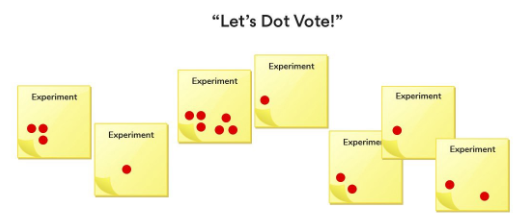This activity is similar to the one described in Affinity Diagram, and is just as versatile as this one. Its main objective is to help a group of people prioritize tasks, challenges, features, or simply items.
This prioritization can pursue very diverse purposes, and gives an indication of where we can use this activity. Some examples are:
This activity can be applied in many areas inside and outside the project. Outside the project this activity is very interesting for example, to work with potential users of functionalities that could be incorporated into a new product.
Within the project, this activity acquires special importance when selecting the MVP in a delivery, or cataloguing the project risks.
The tool consists of building a panel, where all the items (ideas, functionalities, risks, etc.) that need to be addressed in the activity are located. Below or next to this first area, and as the activity progresses, several sub-areas appear where participants group the items according to the objective of the session (cataloging risks, finding an MVP for the next release, etc.)

This panel can be physically built in a meeting room, or a panel with a collaborative virtual tool. Where all the items that will be subjected to classification appear in the first instance, and which has several areas where items can be grouped by affinity.
These sessions are usually carried out within the scope of one or more refinements of the project. The refinements have a maximum recommended duration of 1 hour.
The participants of the session have free access to the panel. They debate among themselves about an item or a set of items, with the aim of creating independent areas that allow some or all of these items to be classified.
Sometimes the different classifications are dynamic, and the participants themselves determine in the same activity what these classifications are (for example the different functional classifications that potentially make up a new product). On other occasions the classifications are defined by the organization, the project management or other levels (for example in the risk classification)
Once a consensus is reached on the different classifications and the items that are incorporated into each classification in a sufficient number, the activity ends.
Affinity Diagram - Balanced Scorecard Institute Download PDF (https://balancedscorecard.org/wp-content/uploads/pdfs/affinity.pdf)